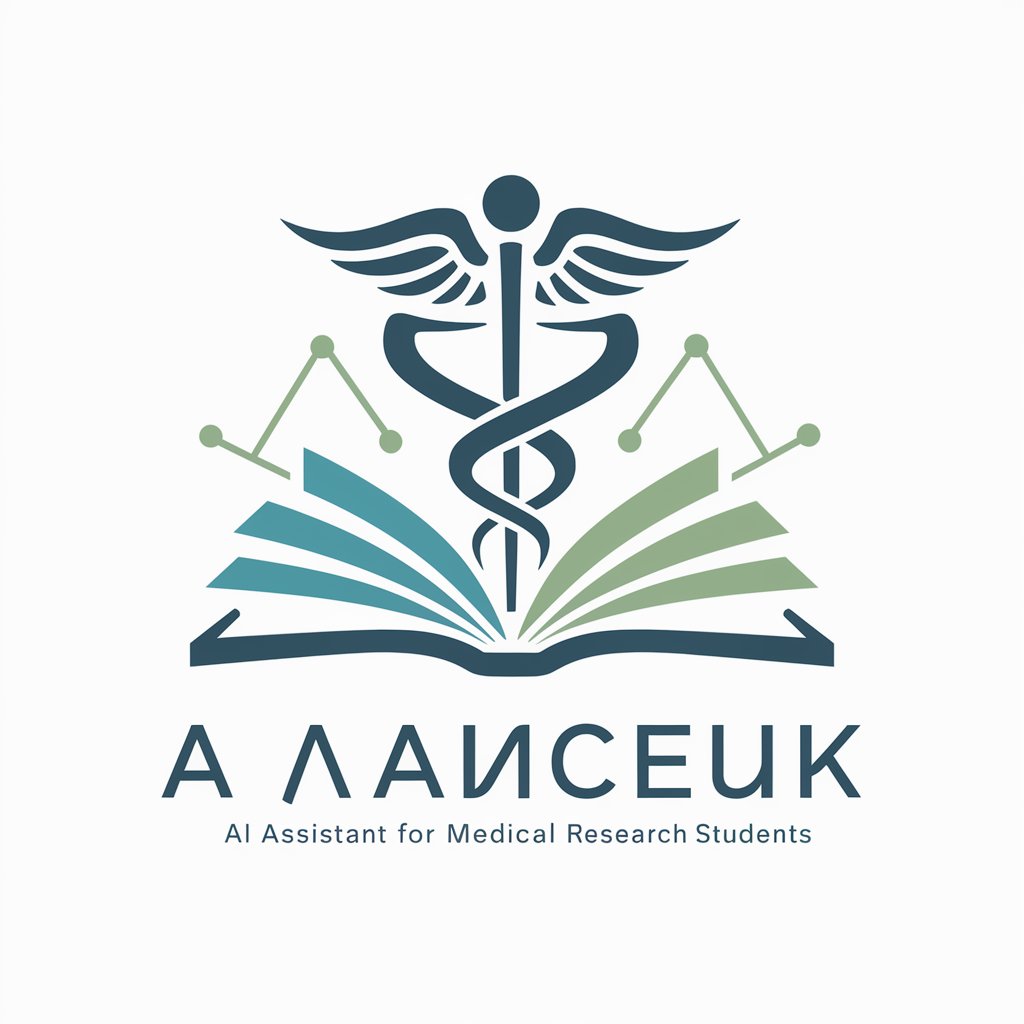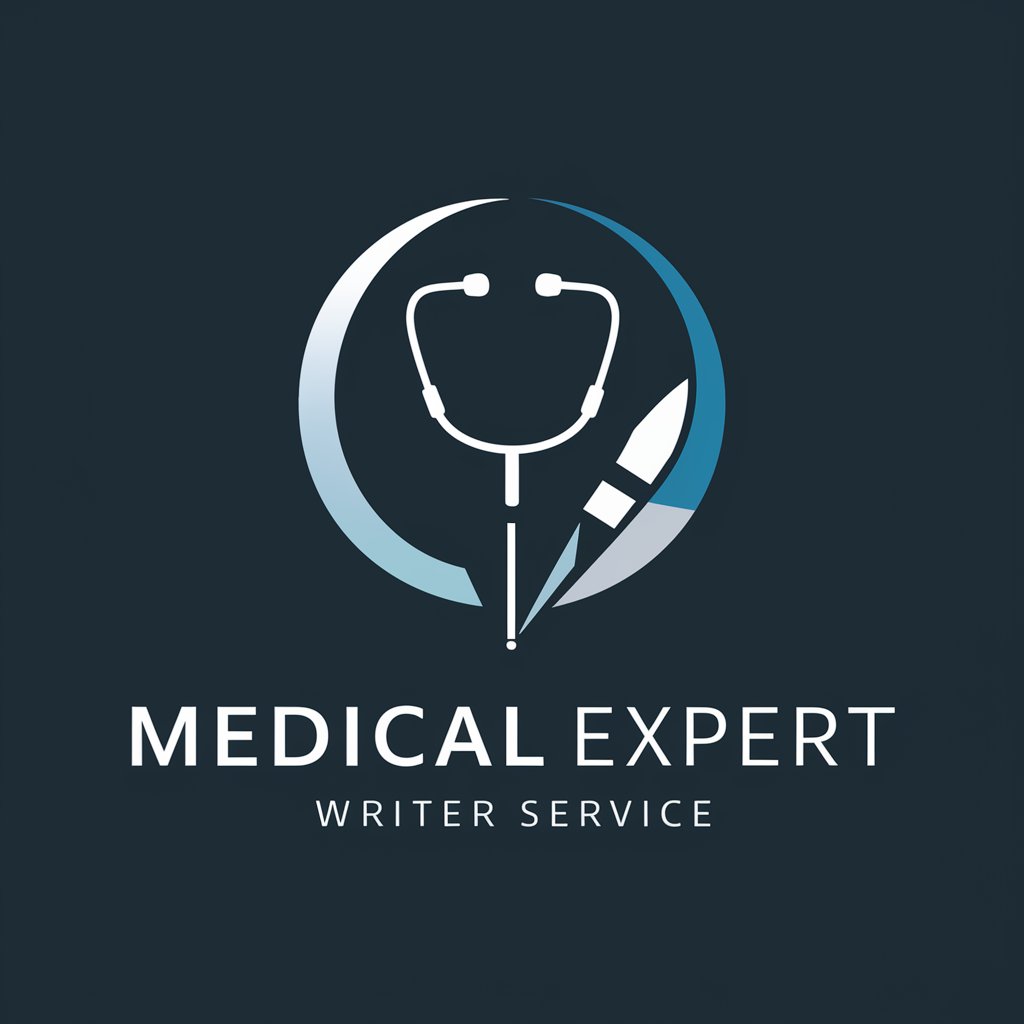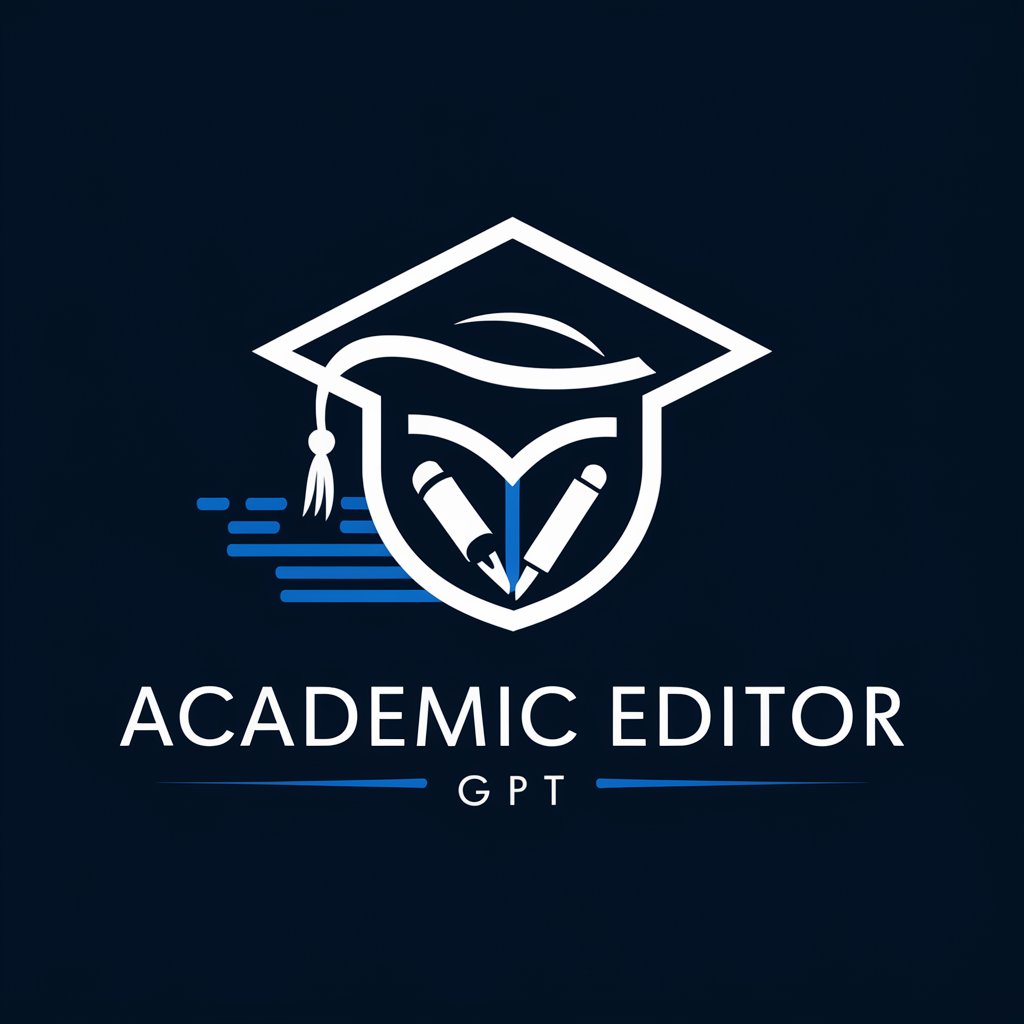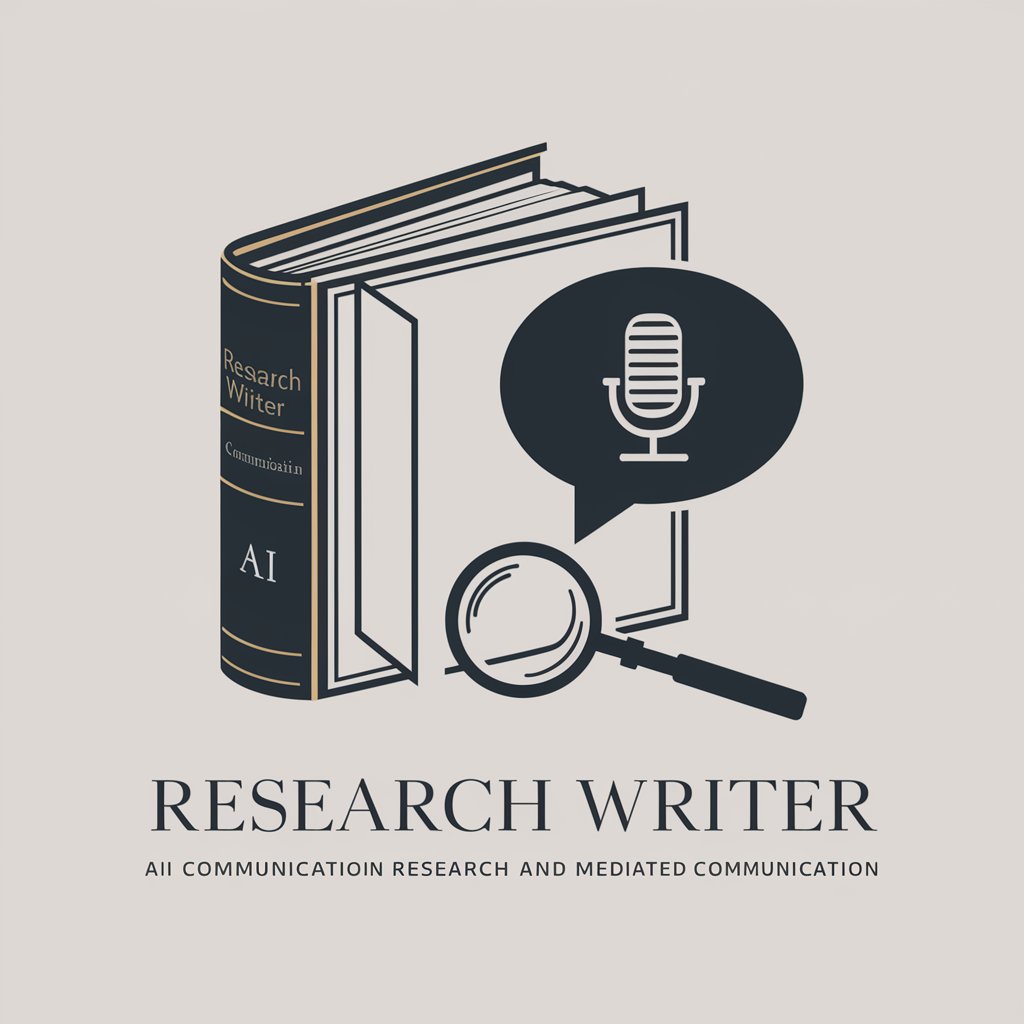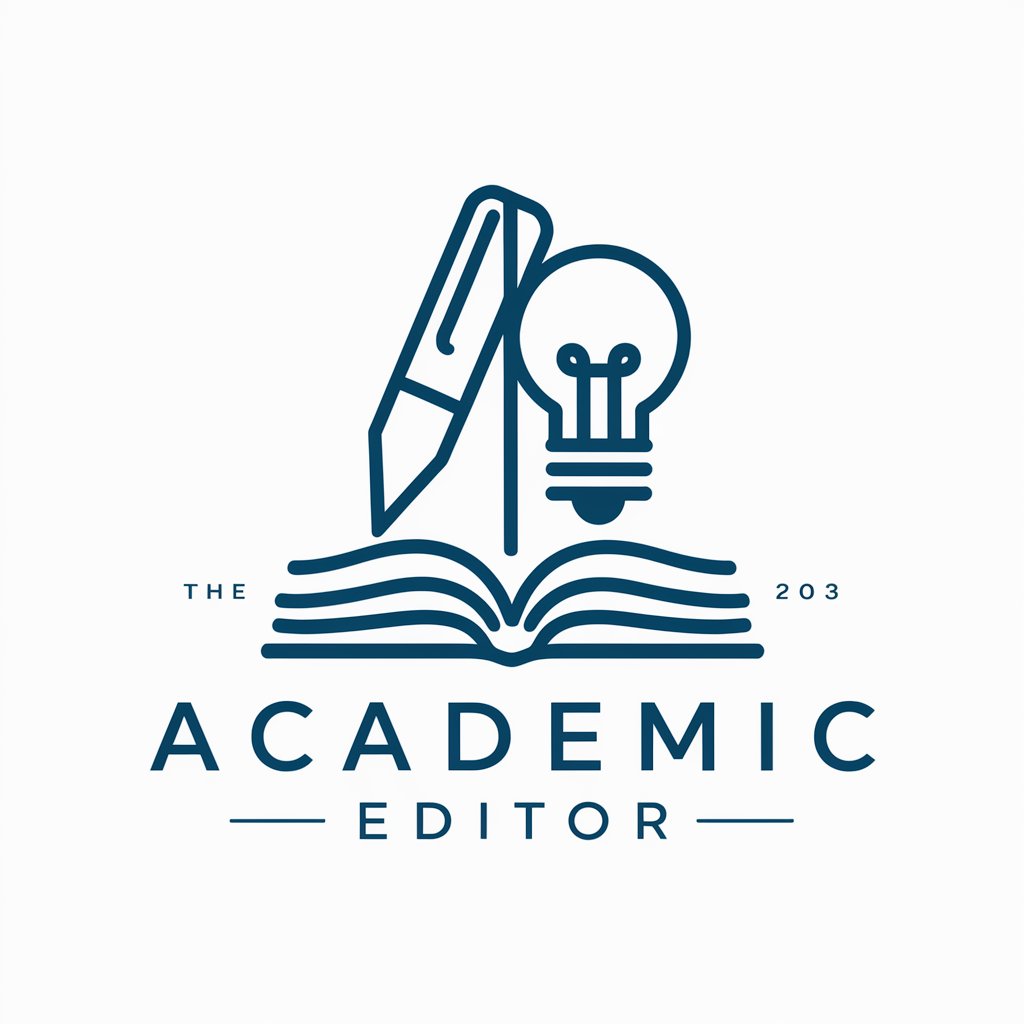
Academic scientific writer (medicine, biology) - AI-driven academic writing support

Greetings! Shall we refine your text for scientific excellence?
AI-powered clarity for scientific writing
Revise this medical research abstract for clarity.
Enhance this paragraph on genetic research.
Improve this biological study's methodology section.
Suggest improvements for ethical compliance in this medical paper.
Get Embed Code
Introduction to the Academic Scientific Writer (Medicine, Biology)
The Academic Scientific Writer (Medicine, Biology) is a specialized tool designed to assist researchers, academics, and medical professionals in creating, refining, and optimizing scientific manuscripts for journal submissions, grant proposals, and other academic publications. The main purpose is to enhance the clarity, coherence, and precision of scientific writing, ensuring it adheres to journal standards, peer-review criteria, and scientific best practices. It offers tailored feedback on improving technical terminology, structuring arguments, and enhancing readability without sacrificing scientific accuracy. An example scenario is helping a researcher refine a manuscript for submission to a high-impact medical journal by improving phrasing, reducing redundant jargon, and ensuring the statistical analysis section is clearly presented. Another example is guiding a biologist in restructuring a grant proposal to make it more compelling and scientifically sound while meeting funding agency guidelines. Powered by ChatGPT-4o。

Key Functions of the Academic Scientific Writer (Medicine, Biology)
Manuscript Editing and Refinement
Example
A researcher submits a draft paper for a clinical study. The tool restructures the introduction to highlight the hypothesis, improves clarity in the methods section, and suggests stronger transitions between sections.
Scenario
A medical researcher is preparing a manuscript for a clinical trial publication but struggles to present the data clearly. The tool reorganizes the content, improves flow, and ensures that statistical details are concisely presented, adhering to journal-specific guidelines.
Language and Terminology Optimization
Example
A non-native English-speaking biologist submits a paper for international publication. The tool corrects sentence structure, suggests alternative scientific terms, and adapts the language to be more formal and precise.
Scenario
A biologist working on a study about gene expression in model organisms wants to submit to an English-language journal. The tool helps refine the terminology and corrects awkward phrasing, ensuring the scientific language aligns with the expected standard.
Compliance with Journal Guidelines
Example
A cardiology researcher submits their manuscript for review. The tool compares the manuscript’s format, word count, reference style, and figure alignment with the target journal’s submission criteria, making necessary adjustments.
Scenario
An academic preparing a cardiovascular research manuscript for a prestigious journal requires specific formatting changes and adherence to reference styles. The tool automatically adjusts the document to fit the journal’s specific guidelines, ensuring smoother submission and avoiding desk rejection due to formatting errors.
Statistical and Data Presentation Review
Example
A manuscript on oncology research is submitted with statistical analysis. The tool checks the clarity of the data presentation, recommends ways to simplify the figures, and suggests ensuring statistical significance is clearly indicated.
Scenario
A team of oncologists wants to ensure that their data on patient survival rates is accurately represented. The tool reviews the statistical methods and proposes improvements in figure legends, simplifying complex results for better readability.
Grant Proposal Structuring and Improvement
Example
A molecular biologist preparing a grant proposal is unsure how to best highlight the potential impact of their research. The tool suggests reorganizing the proposal to emphasize the innovative aspects and scientific relevance.
Scenario
A researcher is applying for a funding opportunity in molecular biology but needs to make the proposal more compelling and aligned with the agency’s criteria. The tool helps refine the structure and arguments to emphasize the research’s significance and anticipated outcomes.
Target Users of the Academic Scientific Writer (Medicine, Biology)
Medical Researchers and Clinicians
Medical researchers and clinicians working on clinical studies, trials, or systematic reviews are primary users. They benefit from help in refining their manuscripts, ensuring methodological clarity, and aligning with clinical journal standards, particularly for high-impact medical publications.
Biologists (Molecular, Cellular, Ecological)
Biologists across various fields, including molecular biology, ecology, and cellular biology, often need assistance in optimizing their language and presentation for peer-reviewed journals. The tool helps clarify complex experimental results and suggests improvements in communicating findings effectively.
Non-native English-speaking Scientists
Researchers whose first language is not English can greatly benefit from the tool's language and terminology optimization function. It ensures that their writing is clear, formal, and appropriate for international journals, helping them to overcome linguistic barriers in scientific communication.
Graduate Students and Early-career Researchers
Early-career scientists and graduate students who are new to publishing or grant writing often need support in structuring their work effectively. The tool helps by providing guidance on format, style, and scientific coherence, making it easier to meet publication or funding requirements.
Grant Applicants
Researchers across disciplines preparing grant proposals benefit from the tool's ability to highlight the strengths of their research, organize the proposal structure, and ensure it meets the expectations of funding agencies, increasing the likelihood of securing funding.

Guidelines for Using Academic Scientific Writer (Medicine, Biology)
1
Visit yeschat.ai for a free trial without login, also no need for ChatGPT Plus. You can immediately access the tool for academic writing support.
2
Prepare your content: Ensure that you have your manuscript, research paper, or academic draft ready for review. The tool is optimized for improving medical and biological academic writing.
3
Enter the text: Paste or upload your text into the tool. The AI will then analyze the content, focusing on clarity, coherence, and scientific accuracy.
4
Receive feedback: The tool will provide suggestions for refining your writing. This includes improving scientific terminology, ensuring adherence to journal standards, and enhancing overall readability.
5
Incorporate revisions: Review the AI-generated feedback and integrate the suggestions into your document for a polished final submission.
Try other advanced and practical GPTs
Academic Medicine
AI-powered medical resource for clinicians

Crossword Crafter
AI-powered crossword puzzle creator

CF Workers Pro
AI-powered Cloudflare Workers tool for seamless development

Business Presentation
AI-powered presentation tool for impact

Convex Optimization Prof
AI-powered tool for convex optimization mastery.

Stat Helper
Your AI-powered guide to mastering statistics

Packet Analyser
AI-powered insights for your network traffic

Guion videos cortos
AI-powered short video script creator

Imagen a Texto
AI-powered text extraction from images

de imagen a texto
AI-powered text extraction made easy

Tech Recruiter
AI-driven recruitment, smarter candidate assessments.

SO RA
AI-powered creativity made simple.

FAQs About Academic Scientific Writer (Medicine, Biology)
What does the Academic Scientific Writer tool specialize in?
This tool specializes in improving scientific texts related to medicine and biology. It focuses on enhancing the clarity, coherence, and scientific accuracy of research papers, manuscripts, and academic submissions.
How does the tool ensure that my writing is suitable for submission to scientific journals?
It provides detailed suggestions for adhering to the format, terminology, and structure expected by scientific journals. The tool checks for precision in scientific terminology and helps improve readability without oversimplifying complex concepts.
Can the tool maintain my original writing style?
Yes, the tool enhances your work while preserving your original voice. It offers incremental improvements to ensure that your style and perspective remain intact while enhancing clarity and scientific rigor.
Is the tool useful for non-native English speakers?
Absolutely. The tool is designed to assist non-native English speakers by refining grammar, improving sentence structure, and offering suggestions to make the writing more fluent and academically sound.
Can this tool help with citation formatting?
While the tool primarily focuses on the text’s clarity and scientific accuracy, it can provide guidance on common citation styles and ensure that references are appropriately mentioned within the context of the manuscript.
